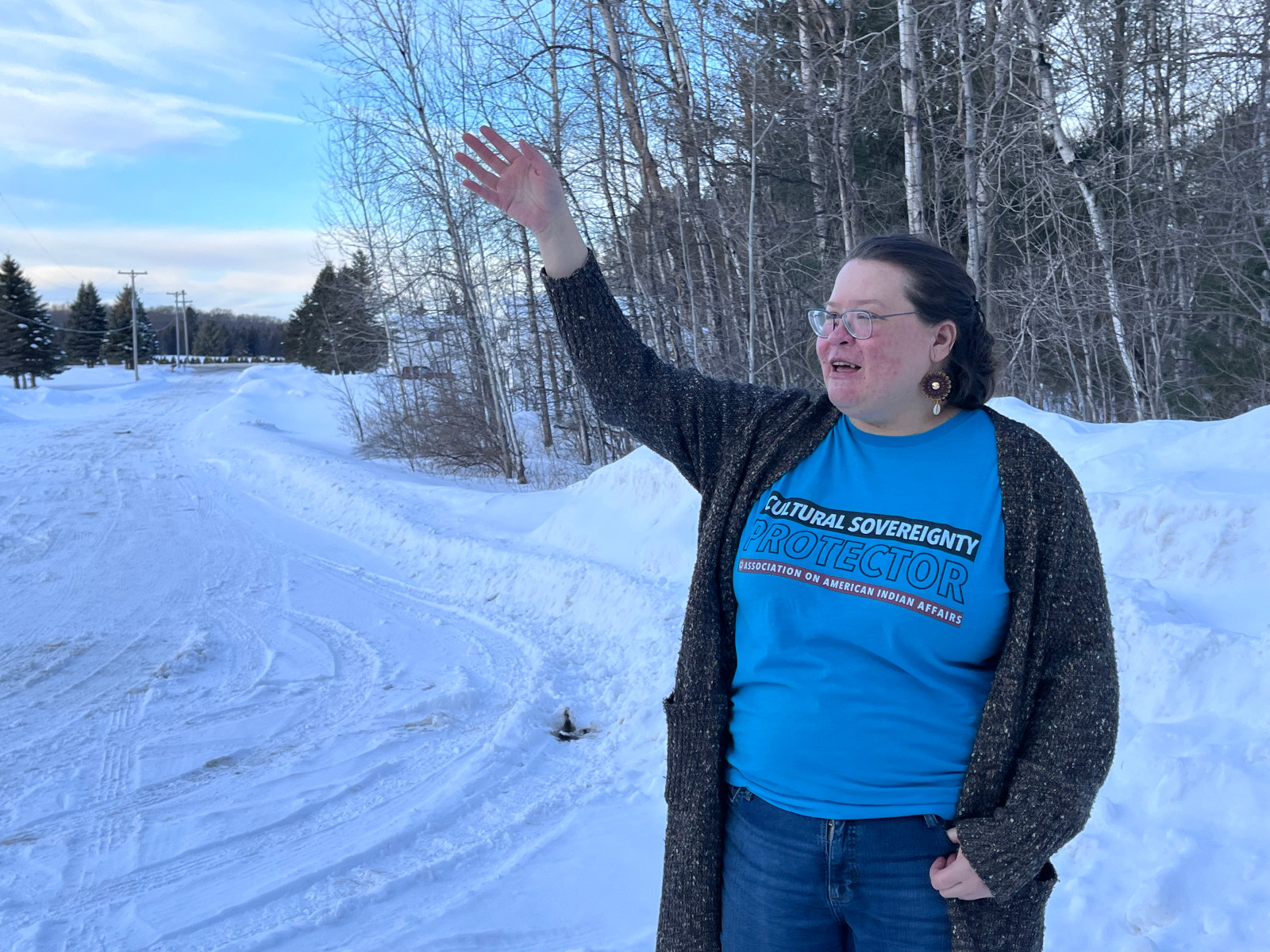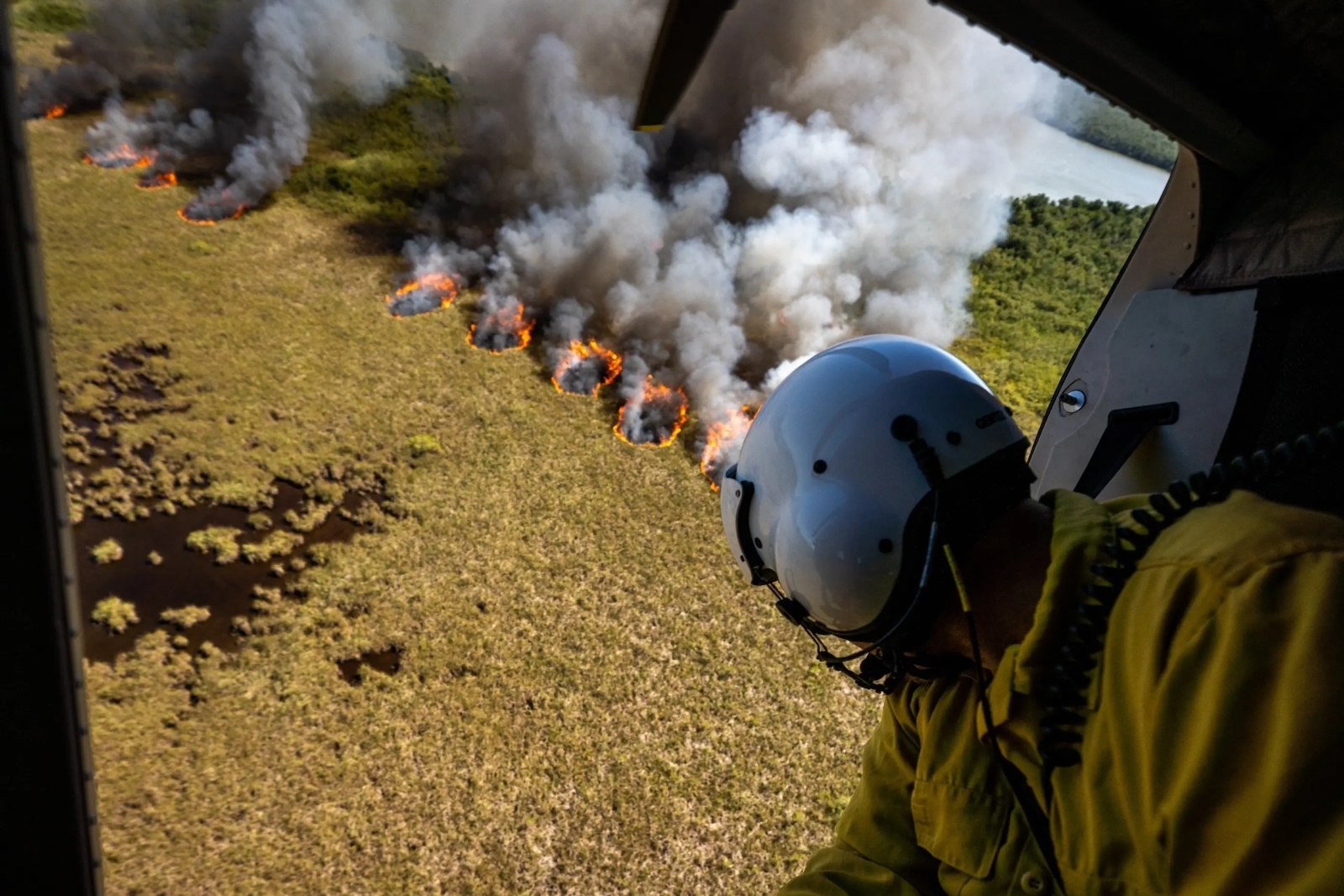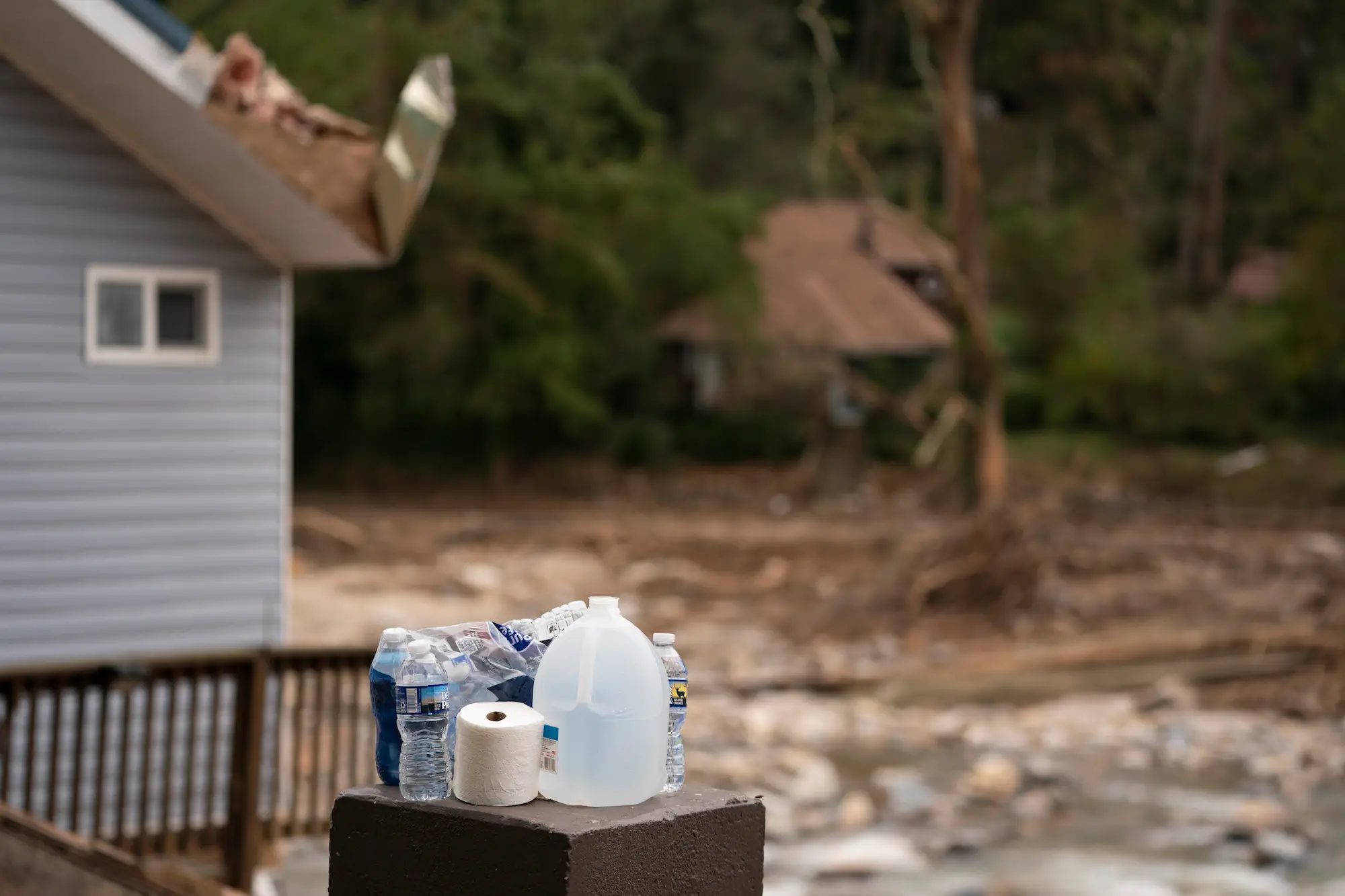The Fight to Be Believed: Long COVID’s Toll on Black Americans

This article is part of a collaboration with the Associated Press, Capital B, and Flint Beat. The work is part of the AP Inclusive Journalism Initiative supported by the Sony Foundation.
Chimére L. Sweeney, a Maryland middle school teacher, was preparing to lead one of her first online classes after the pandemic shutdowns in March 2020 when she said she suddenly felt like someone placed a lit match on her spine.
Over the next several weeks, Sweeney’s vision became blurry, she frequently experienced vertigo, and she had difficulty processing basic information. She figured she had COVID-19, but because she didn’t have any of the primary symptoms — cough, fever, and shortness of breath — she was unable to qualify for a hard-to-find diagnostic test.
In the ensuing weeks and months, Sweeney said she often felt like she had to convince her physicians that she was truly in pain. Ultimately, it took Sweeney two years to be formally diagnosed with a long-term case of COVID-19.
“No one can save this body like me,” said Sweeney, who’s 42 and lives in Baltimore. “The goal for me was to live.”

For Black Americans with long COVID, the first 100 days of the Trump administration have been particularly challenging. The White House has ordered drastic cuts to federal programs that provide funding for research for long COVID and other chronic diseases, including the Office of Long COVID Research and Practice. Those living with or working to treat patients with these illnesses are afraid of how these changes will impact them.
The administration canceled a National Institutes of Health grant that supported an effort called Researching COVID to Enhance Recovery, or RECOVER. That $1.7 billion program was the single largest federal funding mechanism for research into long COVID, which is generally defined as instances when symptoms of the illness last for three months or longer.
And these changes are occurring at a moment when the nation’s top public health official, Robert F. Kennedy Jr., promotes conspiracy theories about COVID’s origins and questions the efficacy of the vaccine.
Taken together, those cuts disproportionately affect Black Americans, who, according to a 2023 report by the U.S. Census Bureau, make up about 32% of long COVID cases — second only to Hispanic Americans, who comprise about 36% of those patients. As many as 20 million Americans are estimated to have contracted long COVID.
Sweeney said she’s increasingly concerned about the reductions to these essential programs.
“Long COVID has been one of the most devastating attacks on our workforce and economy because healthy people who became infected with COVID and now live with long COVID simply can’t work or have been forced to reduce their hours,” she said. “Black people are often more likely to be ill with the condition, but they often do not have the money or privilege to retire or stop working. They must return to work.”
Even before the administration’s cuts to programs designed to help the nation address the disease, studies have shown that Black Americans with long COVID encounter significant disparities in health care when compared to their white counterparts.
Researchers have found that Black long COVID patients report experiencing implicit bias, microaggressions, and other forms of discrimination when seeking treatment for their symptoms.
“They would ask questions like, ‘Are you on drugs? Or do you work? Or, what do you do for a living? Do you have insurance?’” Sweeney said of her physicians. “I’m, like, ‘You all must not be reading my chart because I am an educated Black teacher. I am generally healthy.”
Discouraged by her own encounters with the medical system, and similar accounts from other Black Americans, Sweeney in 2024 founded the Black Long COVID Experience, a website dedicated to providing information about the illness and a resource for patients to find doctors or, as she calls it, “long COVID advocacy for Black folks.”

A cure for long COVID
Brooke Keaton, of Charlotte, North Carolina, is a former elementary school teacher, who — because of her long COVID diagnosis — is dependent on government disability.
The 44-year-old mother of two — Bria, age 6 and Jaren, age 14 — said that she has experienced cognitive decline, asthma, heart issues, neuropathy, extreme spinal pain, numbness and weakness in her hands, and severe fatigue.
Keaton says she belongs to several long COVID support groups, partly to make sure there are Black faces in the groups and also to learn what treatments and diagnoses non-Black patients are receiving.
She said she’s struggled to get physicians to take her symptoms seriously. One of her health care providers recently misdiagnosed a heart condition as anxiety. A new doctor finally helped uncover that she had inappropriate sinus tachycardia.
“I don’t know that if I were not Black, if things would have gone differently,” Keaton said.
Keaton said Black people with long COVID have had to advocate to be included in research studies. Some patients have testified before Congress and written letters to representatives, all to make sure their voices were being heard.
“We are sick people, but we’re doing it to help find a cure,” Keaton said. “We need research. Our ultimate goal is for us to find a cure.”
Long COVID awareness in Black communities
Zanthia Wiley, an associate professor of medicine in the division of infectious diseases at Emory University School of Medicine, said the difference in treatment plans and outcomes between Black and white patients with long COVID often comes down to socioeconomics and access to medical care.
“If you are a bus driver and you have to drive your bus from 8 to 5 every day and you cannot take time off to go and see a doctor, then that is going to decrease the likelihood of your long COVID being diagnosed,” said Wiley. “I think also there is decreased awareness — and not just in Black people, but in the community — with respect to long COVID.”
There are around 400 long COVID clinics in the nation, according to a report by the Long COVID Alliance, a network of patient advocates, researchers, and drug developers who inform the public about post-COVID care.
Wiley said most of the clinics are in urban areas or close to academic institutions. That reality can affect access for Black patients living in rural or exurban areas, particularly in the South.
In communities without long COVID clinics, Wiley said, physicians are seeking three key pieces of information: If a patient’s symptoms stem from other medical problems; if what a patient is reporting is actually long COVID; and how the disease can be treated.
Wiley said the lack of resources is all the more troublesome when you add deep federal cuts to research.
“I am definitely worried about the tragic, chaotic loss of funding that is going to affect people and populations in general,” Wiley said. “And a lot of times in these scenarios, those who are affected the most are those who have, unfortunately, the smallest voice.”

Heather-Elizabeth Brown contracted COVID in 2020, before the release of the vaccine. She spent 31 days on a ventilator in a coma in a Royal Oak, Michigan, hospital, just outside of Detroit. When she finally woke up, she had to relearn to walk and eat.
Brown is a member of the Long COVID Alliance. She said to understand the racial disparities in how long COVID differs for Black patients, it’s vital to go back to 2020 and the start of the pandemic.

“I definitely think that what we saw a lot was patients — and Black patients, first of all — not even having access to the same type of care when the COVID infection happened, not being taken as seriously with some of their symptoms, or not being able to access the tests,” Brown said.
Brown, like other long COVID patients, enjoys legal protections through the Americans with Disabilities Act, which compels employers and others to provide accommodations, such as hybrid work arrangements, for those who are ill with the disease.
Brown said she is deeply concerned that the Trump administration, which has already reversed policies regarding the needs of people with disabilities, might also roll back aspects of the ADA.
“Even just thinking about the fact that some of that could be rolled back or changed or challenged is terrifying, to be honest, because one of the ways that I’m able to do my job and do it well is because I was able to get accommodations,” Brown said.
Predominantly Black cities like Flint have “been hit in different ways”

Aisha Harris, a family medicine physician in Flint, Michigan, said she is nervous about the effect of more cuts in funding for long COVID studies, particularly in places such as Flint.
“Flint has made a lot of small steps as far as progress, even though with those steps, we’ve been hit in different ways,” said Harris, a professor at the College of Human Medicine at Michigan State University. “But the idea of those cuts happening will be devastating and will cause a crisis in Flint that I don’t really want to imagine,” she said.
According to the July 2024 Michigan COVID-19 Recovery Surveillance Study, a joint project between the University of Michigan School of Public Health and the Michigan Department of Health and Human Services, of the 17,000 confirmed COVID-19 cases in the state between March 1, 2020, and May 31, 2022, 22.7% of Black adults reported symptoms of long COVID.
In addition to Sweeney and Brown, several Black long COVID patients who spoke with Capital B said they often aren’t believed by doctors, that they have to push to be included in studies, and that receiving a diagnosis and treatment can be a challenge.
Raven Baxter, who works on educational initiatives at the Mount Sinai Health System’s Cohen Center for Recovery from Complex Chronic Illnesses in New York City, said clinicians failing to believe Black patients when they report symptoms is a significant issue.
Baxter, herself a former long COVID patient, said that during a recent seminar she led, about 10% of the health care providers who were in attendance strongly doubted the actual existence of the conditions being reported by those seeking help.
“So education really goes a long way,” said Baxter, who is a molecular biologist and educator. “Unfortunately, people from all walks of life are already experiencing gaslighting in other dimensions, and it’s just unfortunate that that continues and is compounded by what’s happening with the onset of long COVID.”
Although the clinic where Baxter works is privately funded, she said any disruption in federal dollars for researchers could be devastating to the long COVID community.
The youngest long COVID patients

Stephanie Cunningham, who lives in Warren, Michigan, about 20 minutes outside of Detroit, says doctors suggested that her 8-year-old daughter, Peyton Lee, had invented her symptoms and encouraged her to take Lee to see a psychiatrist.
“Every time we would go to a doctor, they would dismiss me,” said Cunningham, who works with the Michigan Department of Corrections probation department. “I can’t tell you how many times I’ve been told through this process that, ‘You appear to be educated, so I’m going to provide you with knowledge, more information than I normally would.’
“What? That’s devastating to hear,” she said, “Not only for my child, but what about the families that are not educated? What about the families that don’t know how to advocate for their child?”
Amy Edwards is a pediatric infectious disease specialist at University Hospitals Rainbow Babies & Children’s Hospital in Cleveland. Peyton is one of her long COVID pediatric patients.
Edwards said children over the age of 10 are at the highest risk of developing long COVID.
“Think about your life from 10 to 20 and everything that you did and everything that you learned and how much it shaped who you are as a person,” Edwards said. “Then imagine you’re already struggling with racism and classism, if you’re also poor, on top of being non-white. And then imagine having chronic fatigue syndrome or something, and long COVID just dropped right on top of that and how much that takes away.”
Now, with the cuts to federal funding for COVID research, Cunningham said she’s scared for her daughter.
“This is so new, and no one knows enough about it,” she said. “So, how does this affect Peyton? How does it affect her quality of life? She doesn’t have four years to wait on a new administration. We need this information now.”
The post The Fight to Be Believed: Long COVID’s Toll on Black Americans appeared first on Capital B News.





